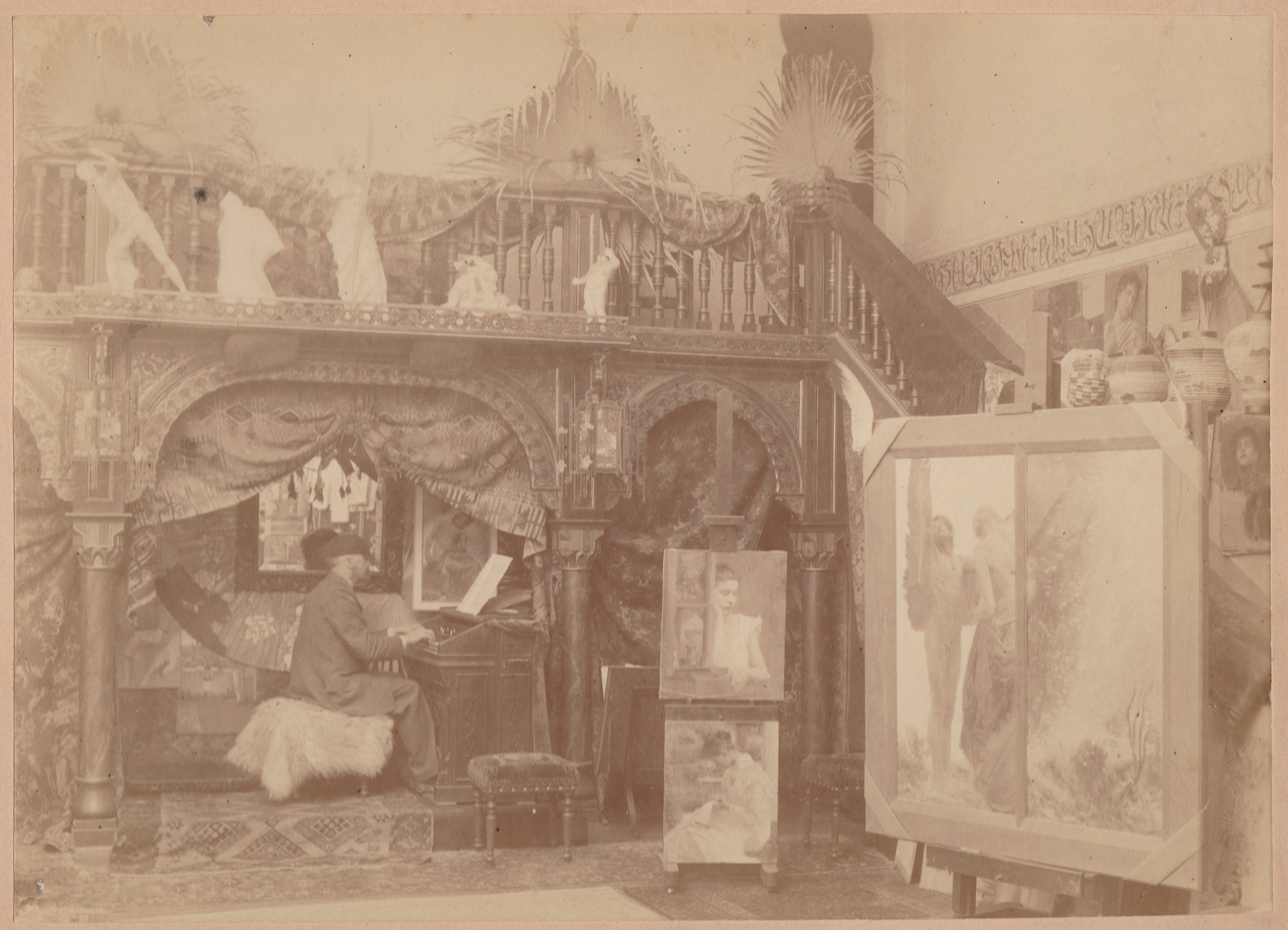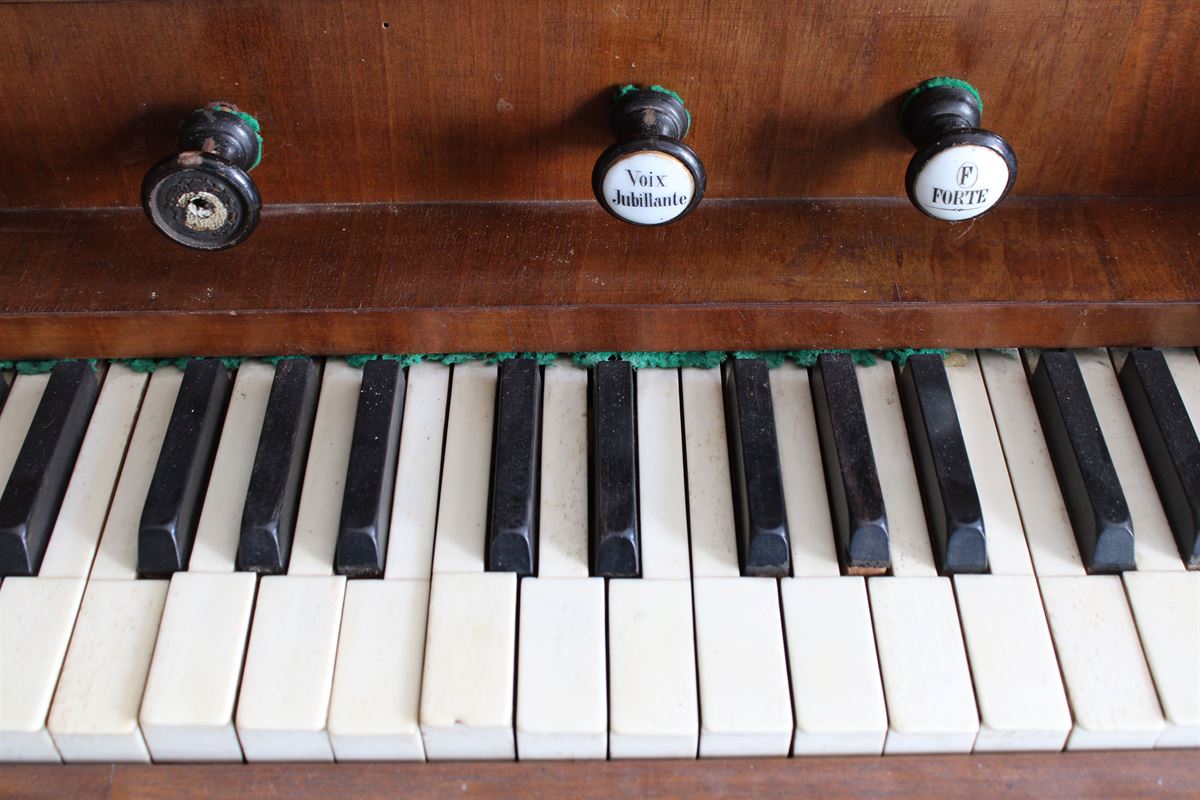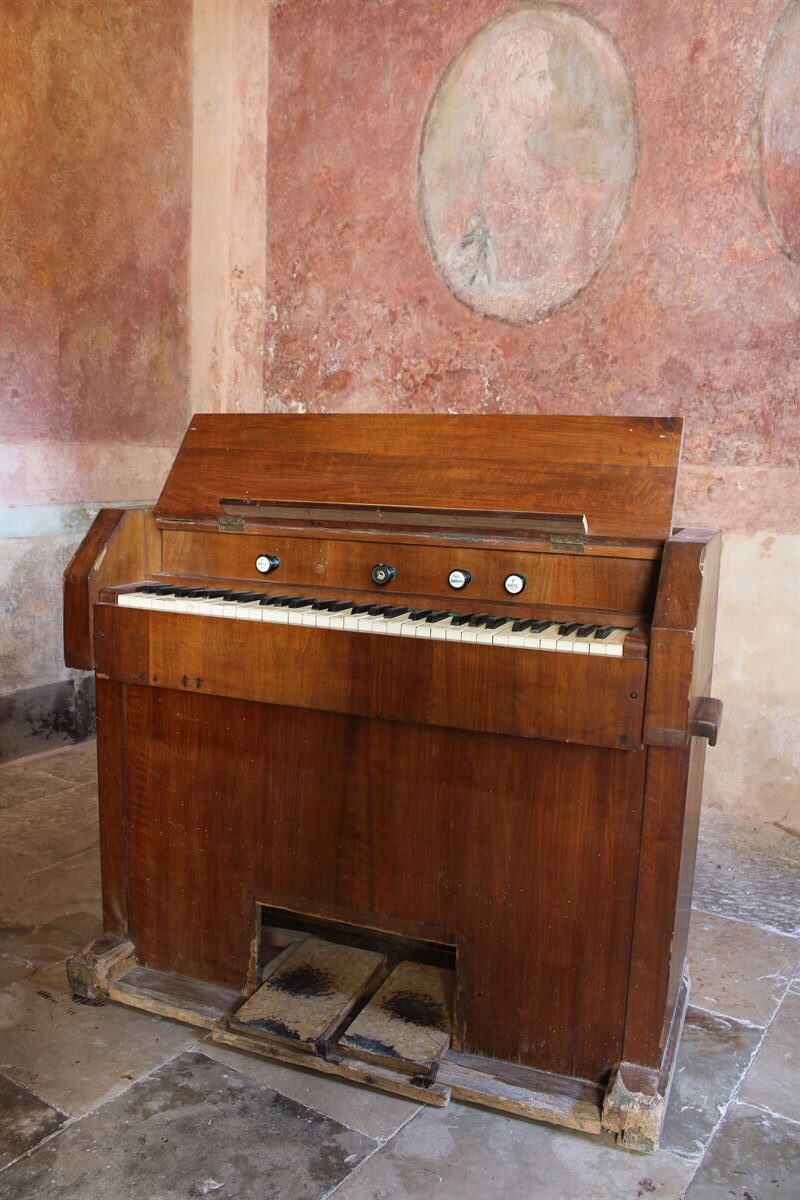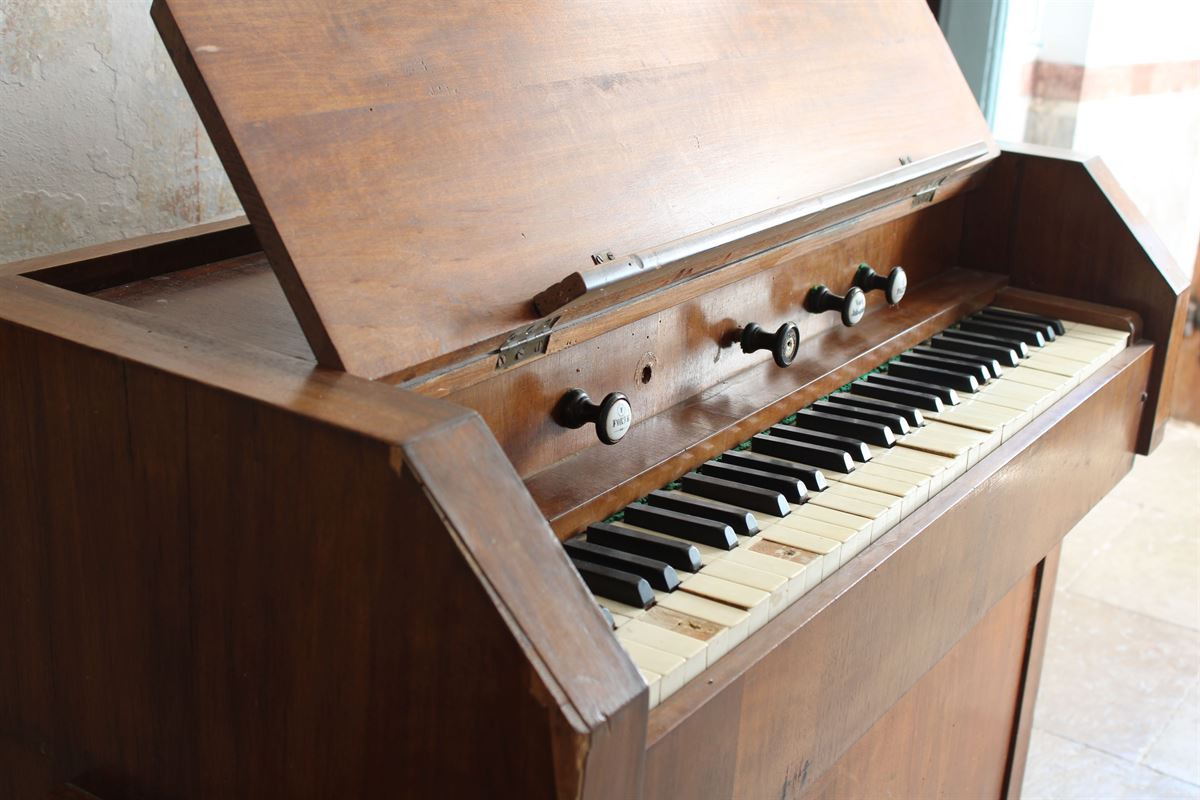tablica
| Inventory number: KB-708 |
| Material: wood, metal, ivory |
| Dimensions: 88 x 102 x 47 cm |
| Dating: late 19th c. |
| Origin: unknown |
The instrument has a simply shaped wooden casing with one manual and four stops, as well as two foot pedals used to pump the bellows. The keys are made of ebony and ivory.
The harmonium, as we know it today, was patented in 1842 in France by the instrument maker Alexandre François Debain (1809–1877), who also protected the name. During the second half of the 19th century, the harmonium was an extremely popular instrument. It was used for music-making in the households of bourgeois families and as an accompanying instrument in liturgy.
The significance of music in the Bukovac family is confirmed by the presence of two harmoniums in the Collection of Furniture and Household Objects at the Bukovac House. The second harmonium is in poorer condition and requires restoration, which is why it is currently not part of the permanent display. However, it is a late 19th-century harmonium with a baluster leg, made by the manufacturer Johann Michl & Sohn (KB-143).
Središnji sadržaj
In one photograph from the studio in Zagreb, Vlaho Bukovac is depicted playing the harmonium, an equally important element of his later workspace in Prague. In the Bukovac family, music was always a source of entertainment, as shown in numerous photographs in the Bukovac House Collection. His daughter, Marija, was a pianist and, during her studies at the Prague Conservatory, practiced for several hours daily on the home piano. As we learn from family letters, the Bukovacs often hosted gatherings and home parties where music was played.





